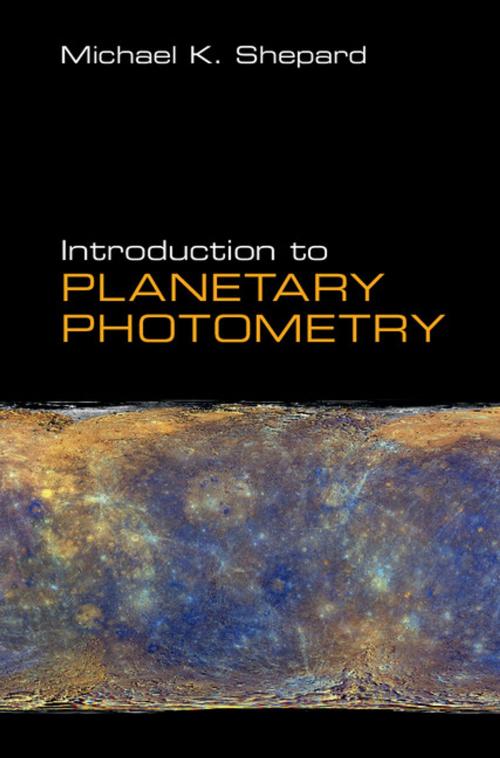Introduction to Planetary Photometry
Nonfiction, Science & Nature, Science, Earth Sciences, Physics, Astronomy| Author: | Michael K. Shepard | ISBN: | 9781108178846 |
| Publisher: | Cambridge University Press | Publication: | April 27, 2017 |
| Imprint: | Cambridge University Press | Language: | English |
| Author: | Michael K. Shepard |
| ISBN: | 9781108178846 |
| Publisher: | Cambridge University Press |
| Publication: | April 27, 2017 |
| Imprint: | Cambridge University Press |
| Language: | English |
Introducing planetary photometry as a quantitative remote sensing tool, this handbook demonstrates how reflected light can be measured and used to investigate the physical properties of bodies in our Solar System. The author explains how data gathered from telescopes and spacecraft are processed and used to infer properties such as the size, shape, albedo, and composition of celestial objects including planets, moons, asteroids, and comets. Beginning with an overview of the history and background theory of photometry, later chapters delve into the physical principles behind commonly used photometric models and the mechanics of observation, data reduction, and analysis. Real-world examples, problems, and case studies are included, all at an introductory level suitable for new graduate students, planetary scientists, amateur astronomers and researchers looking for an overview of this field.
Introducing planetary photometry as a quantitative remote sensing tool, this handbook demonstrates how reflected light can be measured and used to investigate the physical properties of bodies in our Solar System. The author explains how data gathered from telescopes and spacecraft are processed and used to infer properties such as the size, shape, albedo, and composition of celestial objects including planets, moons, asteroids, and comets. Beginning with an overview of the history and background theory of photometry, later chapters delve into the physical principles behind commonly used photometric models and the mechanics of observation, data reduction, and analysis. Real-world examples, problems, and case studies are included, all at an introductory level suitable for new graduate students, planetary scientists, amateur astronomers and researchers looking for an overview of this field.















